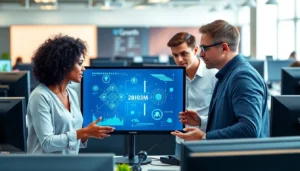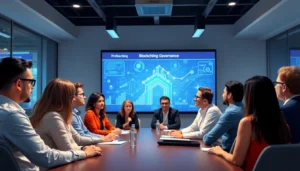Table of Contents
ToggleEver felt stuck in a mental rut, like your brain’s playing a game of musical chairs but forgot the music? Enter the perspective flip method, the mental acrobatics that can turn your thoughts upside down and inside out. This innovative approach helps individuals break free from limiting beliefs and see their challenges from a fresh angle.
Overview Of Perspective Flip Method
The perspective flip method offers an effective way to shift mental frameworks. This technique encourages individuals to view their problems from different angles. By doing so, it fosters creativity and enhances problem-solving skills. Participants often find themselves questioning previously held assumptions.
This method centers on developing mental agility. Practitioners learn to challenge their existing beliefs, opening pathways to new insights. Techniques may include guided visualization and role-playing exercises. Engaging in these practices leads to a deeper understanding of one’s thoughts and attitudes.
Studies indicate that utilizing the perspective flip method can reduce stress and increase resilience. Participants gain a greater capacity for empathy, allowing for improved interpersonal connections. Additionally, flipping perspectives can reveal alternative solutions that may have gone unnoticed.
The method can be applied in various settings, such as personal development and team-building exercises. Organizations frequently implement this approach to enhance collaboration and innovation. By adopting a perspective flip, individuals often discover untapped potentials while breaking free from limiting beliefs.
Incorporating the perspective flip method into daily routines promotes ongoing mental growth. Regular practice cultivates a mindset that embraces change, rather than resisting it. Ultimately, this approach supports a more adaptable and expansive way of thinking.
Benefits Of Perspective Flip Method

The perspective flip method offers numerous advantages that enhance cognitive processes and interpersonal relationships. Individuals adopting this technique experience significant benefits that contribute to both personal and professional growth.
Enhanced Problem Solving
This method encourages individuals to analyze challenges from different angles. By adopting fresh viewpoints, they identify creative solutions that previously seemed unattainable. Participants often realize that shifting their perspective unveils alternative strategies. Engaging in role-playing exercises cultivates a deeper understanding of obstacles. Greater flexibility in thinking enables faster resolution of conflicts. As a result, problem-solving skills sharpen, leading to more effective outcomes in various situations.
Improved Creativity
Creativity thrives in environments that promote open-mindedness and exploration. The perspective flip method supports this by challenging conventional thought patterns. Individuals who participate in guided visualizations frequently discover new avenues for artistic expression. Thinking outside the box fosters innovative ideas. By exploring multiple frameworks, they experience a boost in imaginative capabilities. Team settings also benefit, as collaboration enhances creative brainstorming. Overall, the method cultivates an adaptive mindset that embraces change, ultimately leading to enhanced innovation.
Techniques For Implementing Perspective Flip Method
Utilizing specific techniques enhances the effectiveness of the perspective flip method. Two popular approaches are guided visualization and role-playing exercises.
Guided Visualization
Guided visualization encourages individuals to imagine scenarios from alternative viewpoints. Participants close their eyes and follow a facilitator’s prompts, creating vivid mental images. By envisioning challenges from diverse angles, they gain clarity and insight. This technique fosters emotional engagement, allowing individuals to explore feelings tied to situations. Engaging the imagination helps participants challenge limiting beliefs. As a result, new solutions and perspectives emerge. Practicing guided visualization regularly increases mental flexibility and equips individuals to handle obstacles more effectively.
Role-Playing Exercises
Role-playing exercises facilitate experiential learning through simulation of real-life situations. Participants adopt different roles and act out scenarios relevant to their challenges or conflicts. By stepping into another’s shoes, they develop empathy and understanding. This technique helps highlight differing perspectives and social dynamics. Experiencing a situation from multiple angles fosters innovative thinking and collaborative problem-solving. Observers often gain insights that enhance their own approaches to challenges. Repeated role-playing practice sharpens communication skills and promotes adaptability in various contexts.
Real-World Applications Of Perspective Flip Method
The perspective flip method shows utility in various sectors, notably in business and education.
In Business
Organizations increasingly incorporate the perspective flip method to enhance team dynamics and innovation. By adopting this approach, employees gain fresh insights into problems, helping them to break free from conventional thinking. This technique fosters collaboration, allowing diverse viewpoints to enrich brainstorming sessions. Companies that emphasize this method report improved creativity and stronger team cohesion. Executives often utilize role-playing scenarios to simulate challenges, enabling staff to step into each other’s shoes. Such exercises enhance empathy and communication, ultimately leading to quicker decision-making and more effective problem-solving.
In Education
The perspective flip method transforms educational environments by encouraging critical thinking and engagement. Teachers implement this technique to challenge students’ assumptions and expand their problem-solving skills. Utilizing guided visualization, students explore topics from multiple angles, enriching their understanding. Class discussions rooted in this approach often lead to deeper analysis and insightful debates. Additionally, role-playing in classrooms strengthens interpersonal skills and builds empathy among peers. As students learn to view issues differently, they develop resilience and adaptability, essential competencies in today’s fast-changing world.
The perspective flip method stands out as a powerful tool for personal and professional growth. By encouraging individuals to view challenges from new angles, it fosters creativity and enhances problem-solving abilities. This technique not only helps in breaking free from limiting beliefs but also cultivates resilience and adaptability in an ever-changing environment.
Incorporating the perspective flip method into daily routines can lead to significant improvements in mental agility and interpersonal connections. As individuals embrace this approach, they unlock their potential and discover innovative solutions to obstacles. Ultimately, the perspective flip method paves the way for a more open-minded and collaborative mindset, driving success across various domains.




